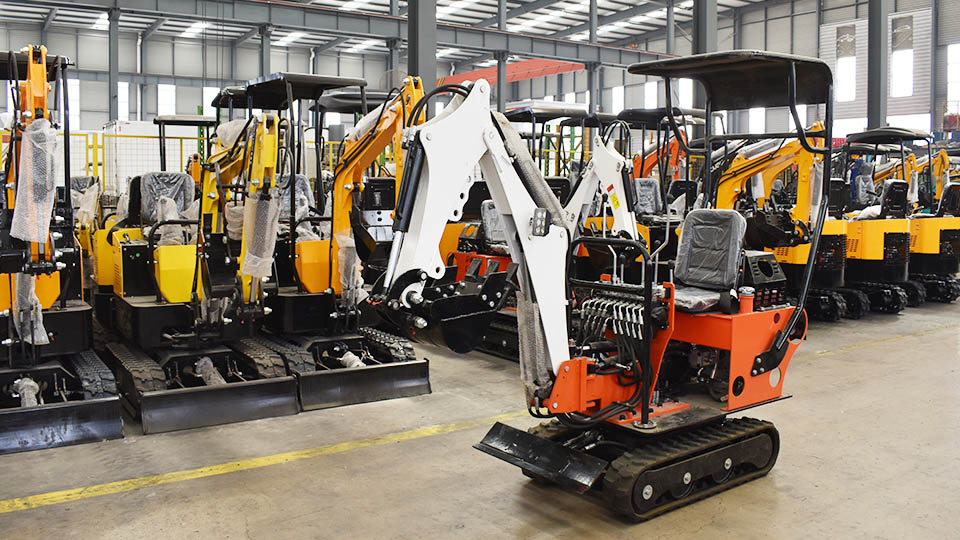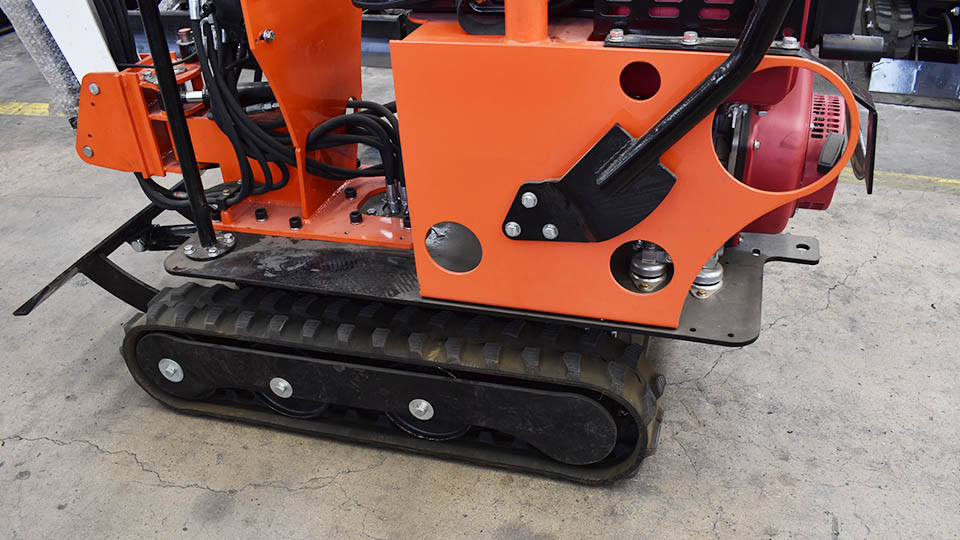Excavators formidable machines capable of moving vast quantities of earth and handling heavy materials are indispensable in numerous industries including construction mining and infrastructure development. Two critical factors that significantly influence an excavator's operational capabilities and safety are its weight and how that weight is distributed across the ground resulting in ground pressure. Furthermore the weight and its distribution are intrinsically linked to the machine's stability particularly during dynamic operations such as digging swinging and lifting. Understanding the complex interplay between excavator weight ground pressure and stability is paramount for safe efficient and effective operation as well as for minimizing damage to the work environment. This technical article delves into the fundamental principles governing these relationships exploring how excavator weight directly impacts ground pressure and subsequently affects the machine's stability under various working conditions.
The Fundamental Relationship: Weight and Ground Pressure
Ground pressure is defined as the force exerted by an object on the ground over a specific area. In the context of mini excavator it is the total weight of the machine distributed across the contact area of its tracks or tires with the ground. The fundamental formula for pressure is Pressure Force Area. In this case the force is the weight of the excavator and the area is the total contact area of the tracks or tires. Therefore a heavier excavator with the same contact area will exert higher ground pressure compared to a lighter one. Conversely an excavator of the same weight but with a larger contact area will have lower ground pressure.
For tracked excavators the contact area is determined by the length and width of the tracks in contact with the ground. Factors such as track shoe width and the length of track on the ground influence this area. For wheeled excavators the contact area is the combined footprint of the tires in contact with the surface which is affected by tire size inflation pressure and the number of tires.

The Impact of High Ground Pressure:
High ground pressure exerted by a heavy excavator can have several significant consequences:
Soil Compaction: Excessive ground pressure can compact the soil structure reducing its porosity and permeability. This can hinder plant growth impede drainage and negatively impact soil health particularly in agricultural or landscaping applications.
Damage to Sensitive Surfaces: Operating heavy excavators on paved surfaces asphalt or finished landscaping can cause cracking rutting and other forms of damage due to the high pressure exerted on these relatively delicate materials.
Risk of Sinking: In soft or unstable ground conditions high ground pressure increases the risk of the excavator sinking or becoming bogged down making operation difficult and potentially hazardous.
Increased Wear and Tear: Higher ground pressure can lead to increased wear and tear on the undercarriage components such as tracks rollers and idlers as they bear the brunt of the machine's weight and the resistance from the ground.
The Advantages of Low Ground Pressure:
Conversely operating excavators with lower ground pressure offers several benefits:
Reduced Soil Compaction: Lower pressure minimizes soil compaction preserving soil structure and health which is crucial in agriculture forestry and landscaping.
Operation on Sensitive Surfaces: Excavators with low ground pressure can operate on paved areas lawns and other finished surfaces with minimal risk of damage.
Improved Flotation in Soft Ground: A larger contact area distributing the weight more evenly allows excavators with low ground pressure to operate more effectively in muddy soft or sandy conditions with a reduced risk of sinking.
Reduced Undercarriage Wear: Lower ground pressure generally translates to less stress on the undercarriage components potentially extending their lifespan and reducing maintenance costs.
The Crucial Role of Weight in Excavator Stability:
Stability is the ability of an excavator to resist overturning or tipping over during operation. The weight of the excavator and its distribution are fundamental factors influencing its stability. A heavier excavator generally has a lower center of gravity and a wider stance both of which contribute to greater stability.
Center of Gravity: The center of gravity is the point at which the entire weight of the excavator is considered to be concentrated. A lower center of gravity increases stability as it requires a greater force to cause the machine to tip. Heavier excavators tend to have a lower center of gravity due to the larger and heavier components located lower in the machine's structure such as the undercarriage and counterweight.
Stance or Footprint: The width and length of the excavator's tracks or the spacing of its tires define its stance or footprint. A wider and longer stance provides a more stable base resisting tipping forces more effectively. Heavier excavators often have wider track gauges and longer track frames contributing to a larger and more stable footprint.
How Weight Affects Stability During Operation:
The weight of the excavator plays a critical role in maintaining stability during various operational activities:
Digging: When the excavator is digging the force exerted by the bucket on the ground creates a reaction force that can potentially cause the machine to pivot or tip. A heavier excavator with a lower center of gravity and wider stance is better able to resist these tipping forces allowing for more aggressive digging.
Swinging: When the excavator's upper structure swings the inertia of the rotating mass can create tipping forces especially when carrying a load. A heavier machine with a well-designed counterweight provides greater resistance to these rotational forces ensuring stability during swinging.
Lifting: Lifting loads significantly affects the excavator's stability as the weight of the load adds to the overturning moment. Heavier excavators with larger counterweights and robust undercarriages can lift heavier loads at greater reaches while maintaining stability. Load charts provided by manufacturers specify the safe lifting capacities at various distances from the machine's center of rotation taking into account the excavator's weight and stability characteristics.
Traveling on Slopes: Operating an excavator on inclines introduces additional stability challenges. The weight distribution of the machine becomes critical with a higher center of gravity increasing the risk of tipping sideways or end over end. Heavier excavators with lower centers of gravity and wider track bases are generally more stable when traversing slopes but careful operation and adherence to manufacturer guidelines are essential.
Optimizing Weight for Ground Pressure and Stability:
Manufacturers strive to optimize the weight distribution and undercarriage design of excavators to achieve a balance between ground pressure and stability for their intended applications. This involves careful consideration of factors such as:
Counterweight Design: The size and placement of the counterweight are crucial for balancing the weight of the boom arm and bucket and the load being handled. A heavier counterweight enhances lifting capacity and stability but also increases the overall weight and ground pressure.
Undercarriage Design: The length and width of the tracks track shoe design and the number of rollers influence the contact area and thus the ground pressure. Wider and longer tracks distribute the weight over a larger area reducing ground pressure while also contributing to greater stability.

Weight Distribution: The placement of major components such as the engine hydraulic pumps and fuel tanks is carefully considered to achieve a low center of gravity and optimal weight distribution for enhanced stability.
Material Selection: The use of high-strength lightweight materials in certain components can help to reduce the overall weight of the excavator without compromising structural integrity or stability.
Operator Considerations:
Operators play a crucial role in ensuring the safe operation of excavators with respect to ground pressure and stability. This includes:
Understanding Load Charts: Operators must be thoroughly familiar with the excavator's load charts and adhere to the specified lifting capacities at various reaches and configurations to prevent tipping.
Operating Within Stability Limits: Avoiding abrupt movements excessive swing speeds and lifting loads beyond the machine's capacity are essential for maintaining stability.
Considering Ground Conditions: Operators must assess the ground conditions and avoid operating heavy excavators on soft or unstable terrain that could lead to sinking or instability.
Proper Machine Setup: Ensuring the excavator is properly leveled and that the undercarriage is in good working order contributes to stability and even weight distribution.
Conclusion:
The weight of an excavator is a fundamental parameter that has a direct and significant impact on both ground pressure and stability. Higher weight leads to increased ground pressure potentially causing soil compaction damage to surfaces and a risk of sinking while also contributing to greater stability and lifting capacity. Conversely lower weight results in reduced ground pressure allowing operation on sensitive surfaces and improved flotation but may compromise stability and digging force. Manufacturers design excavators with a careful balance of weight distribution and undercarriage configuration to optimize these factors for specific applications. Operators must also be acutely aware of the relationship between weight ground pressure and stability to ensure safe efficient and environmentally responsible operation of these powerful machines. A thorough understanding of these principles is essential for maximizing productivity minimizing risks and selecting the right excavator for the job.
Post time:Sep-25-2020
